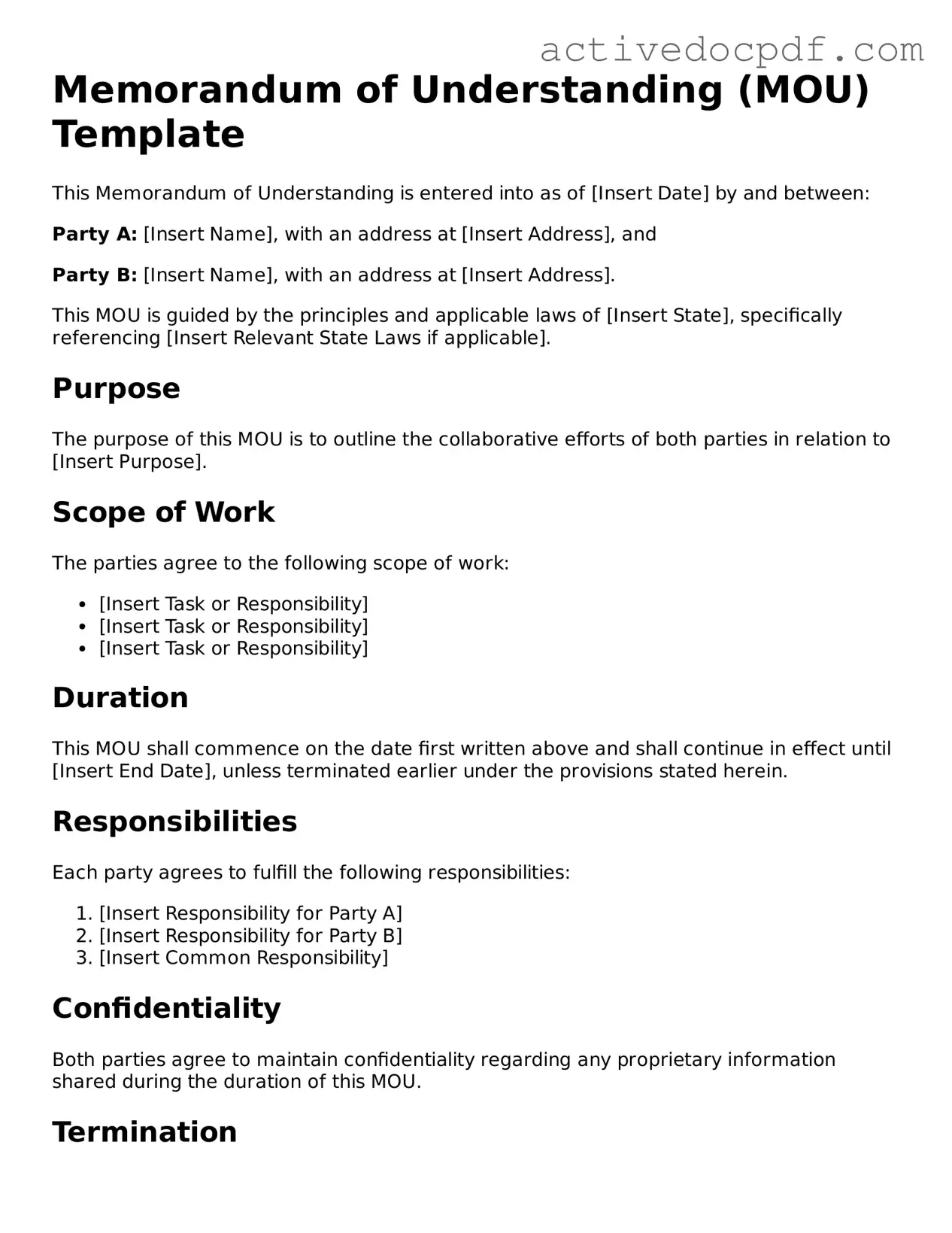What is a Memorandum of Understanding (MOU)?
A Memorandum of Understanding, or MOU, is a formal agreement between two or more parties. It outlines the intentions, responsibilities, and expectations of each party involved in a specific project or collaboration. While an MOU is not legally binding like a contract, it serves as a useful tool for clarifying the terms of cooperation and ensuring that all parties are on the same page. This document can be particularly beneficial in establishing a foundation for future agreements.
When should I use an MOU?
Using an MOU is ideal in various situations, including:
-
When parties are exploring a potential partnership but are not ready to commit to a legally binding contract.
-
To outline the roles and responsibilities of each party in a collaborative project.
-
When parties want to document their mutual understanding and intentions before moving forward.
-
In scenarios where informal agreements are common but a written record is still desirable.
By using an MOU, you can create a clear framework for your collaboration while leaving room for flexibility as the partnership develops.
What should be included in an MOU?
An effective MOU typically includes several key components:
-
Purpose:
A brief statement explaining the goal of the MOU.
-
Parties Involved:
Names and contact information of all parties entering the agreement.
-
Roles and Responsibilities:
A detailed outline of what each party is expected to do.
-
Duration:
The time frame during which the MOU will be in effect.
-
Confidentiality:
Any agreements regarding the sharing of sensitive information.
-
Dispute Resolution:
A plan for addressing disagreements that may arise.
Including these elements helps to ensure clarity and mutual understanding among all parties involved.
Is an MOU legally binding?
Generally, an MOU is not considered legally binding. However, it can carry legal weight if it contains specific language indicating that the parties intend to create a binding agreement. Courts may enforce an MOU if it meets certain criteria, such as:
-
The parties have expressed a clear intent to be bound by the terms.
-
The MOU includes essential elements of a contract, such as offer, acceptance, and consideration.
It’s important to be cautious and deliberate in the wording of an MOU. If there’s any uncertainty about whether you want the MOU to be binding, it’s wise to consult with a legal professional before finalizing the document.
